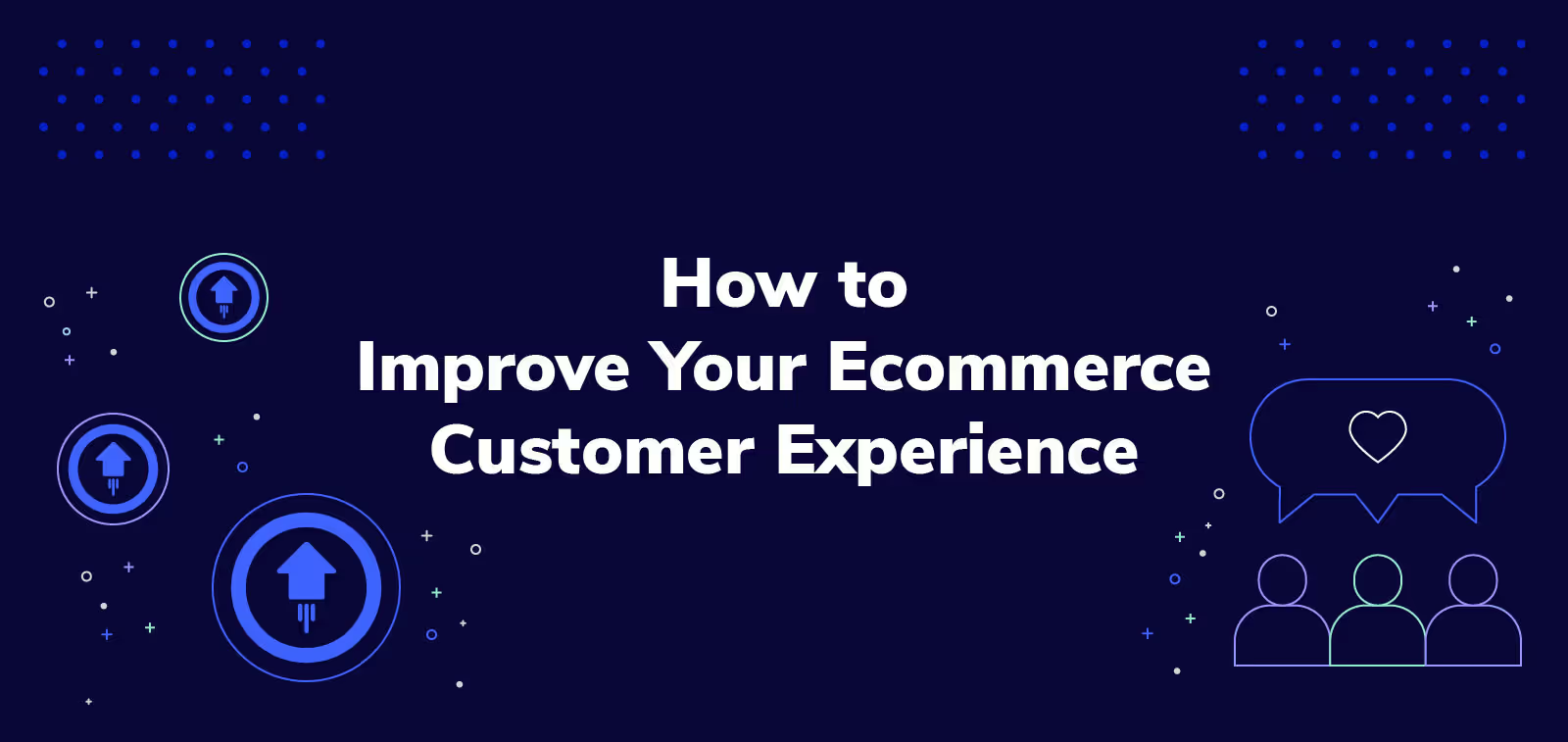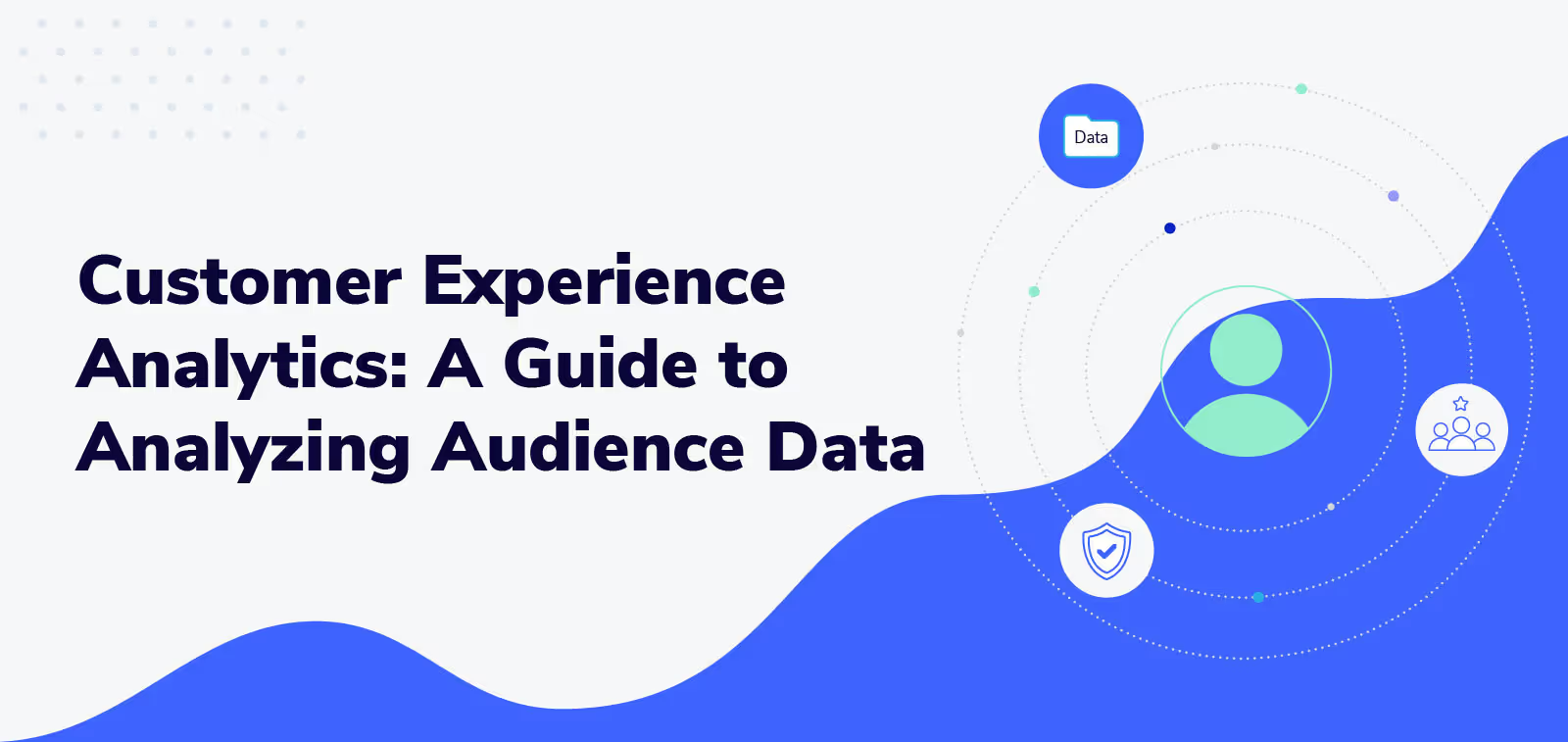15 Essential Customer Experience Tools for Ecommerce

According to a 2022 report from social commerce software provider Emplifi, four out of five customers would leave a brand they love after three or fewer instances of a poor customer experience. One in five would leave after a single instance.
Those instances can take place at numerous points throughout the customer journey, like when someone is trying to get to know your brand by clicking on a Google display ad or reviewing your product protection information before purchasing. If either of these experiences are mishandled, customers may opt to visit a competitor for a better experience.
Four out of five customers would leave a brand they love after three or fewer instances of a poor customer experience.
Ecommerce competition is especially fierce: SearchNode reported in 2021 that 84% of surveyed decision-makers say competition is “tough” or “very tough.”
Increase your chances of acquiring and keeping customers by investing in customer experience tools that monitor, analyze, and improve customer engagement. If you’re not auditing your customer experience tools on a regular basis, you risk missing opportunities to create more personalized experiences through a better grasp of customer behavior.
Best tools for customer experience mapping: UXPressia & Smaply
Customer experience maps, also known as customer journey maps, visualize your strategies for customer acquisition and retention. UXPressia and Smaply create these maps digitally, saving you the hassle of manually whiteboarding customer touchpoints.
UXPressia
UXPressia creates visually rich digital maps that chart several customer experience layers. These include customer emotions at certain stages of their journey and the communication channels you use to capture and keep their business.

UXPressia’s pre-built templates make it simple to create maps where each column represents a stage in the customer loyalty loop:
- Consideration of several products or brands
- Evaluation of a smaller set of products or brands
- Final purchase
- Your company’s post-purchase service offerings
- Customer advocacy
Use different rows to capture buyers’ goals, needs, and expectations at each stage. Knowing these, you can start putting together a strategy to meet those expectations.
UXPressia also lets you add analytics from other platforms to monitor the effectiveness of the journeys you’ve mapped.
Say you’ve set up event tracking in Google Analytics to monitor the number of clicks on a pop-up offering 15% off a first purchase. Slide that dashboard into a square in the Purchase stage’s column, and monitor pop-up conversions in real time, directly from the map.
Smaply
Smaply is similar to UXPressia, graphically and functionally. But unlimited templates in its least expensive paid plan — UXPressia limits you to three — and a mobile app version set it apart.
With Smaply’s unlimited journey map templates, create maps that focus on different customer personas or different team members’ roles in meeting customer expectations. Its persona templates help you understand the customer before you map their desired experiences.

A new customer and returning customer likely have different expectations, which you can map separately. You may have a shipping department that handles customer communications when an order goes out. Map the processes it should follow to keep customers informed.
Smaply’s mobile app snaps a photo of a manually whiteboarded map and turns it into a grid for your digital map. Use this feature to keep track of several iterations of a map, and combine the best elements from each into a final version all stakeholders agree on.
Honorable mention: Gliffy
Gliffy is a less visually robust mapping tool than UXPressia and Smaply. It’s ideal for teams who want a “digital whiteboard” to brainstorm customer journey steps. It uses a series of drag-and-drop, color-coded shapes to represent stages of the customer journey and your actions at each of them.
Best tools for customer experience management: HubSpot & Salesforce
Once you’ve mapped your journeys, put them into action with customer experience management software. Create personalized communications that move the customer into the sales funnel, track their responses, and use that data to design smarter acquisition and retention campaigns.
According to a 2021 McKinsey study, 71% of consumers expect companies to deliver personalized interactions. HubSpot and Salesforce have two of the most popular CRMs on the market, which store huge amounts of customer data and help make personalized experiences possible.
HubSpot
HubSpot’s CRM put it on the map, but its seamless integration with ecommerce platforms like Shopify and vast array of marketing automation tools make it a powerful customer experience management platform.
As HubSpot gathers customer data, it creates more segmentation options. Use these segments to build campaigns that acknowledge the customer’s history with your brand.
Start with HubSpot’s drag-and-drop journey builder and quickly design personalized responses to an abandoned cart, for example.

Say the abandoning customer has given you their email address. Send an email drip campaign with a discount over the next week to get them over the line. And that Shopify integration? Easily pull the product they viewed from Shopify into your email.
Salesforce
It’s often tough to choose between Salesforce and HubSpot. Salesforce stands out for having an ecommerce platform and CRM under the same roof, giving you even more flexibility when it comes to improving the customer experience.
Salesforce uses machine learning and CRM data to deliver personalized results for the search drop down, search pages, and category grid pages.
If a new customer searches for “hoodie,” Salesforce delivers the most frequently clicked on products for that search term.

Say an existing customer searches for the same term. Salesforce’s CRM mines their data, serves them with products they haven’t bought, and upsells them on products that can lead to higher average order value.
Honorable mention: Adobe Experience Manager
Though it lacks a CRM, Adobe Experience Manager (AEM) uses collected customer data to personalize web-based content, including banner images and eCommerce product recommendations.
From a single content management platform, AEM lets you customize banner images according to a customer’s location. Say you have an ecommerce store that sells sporting goods, and a customer in Hawaii lands on your site. Using AEM, the first image they see can be a surfboard, not a pair of snow skis.
Best tools for customer feedback management: Medallia & Qualtrics
Customer feedback management tools measure customer satisfaction levels with the experiences you’ve mapped in UXPressia or Smaply and launched with the help of HubSpot or Salesforce.
CX software platforms Medallia and Qualtrics analyze survey results, social media conversations, online reviews, and more to give you actionable insights into why customers are or aren’t buying your products. If customers aren’t buying because of a lapse in their experience, these analytics tools highlight what you must do to fix it.
Qualtrics
Qualtrics’ most powerful feature is predictive analytics, which is becoming more important for customer-centric companies. NTT reported in 2021 that nearly 50% of business leaders believed that being proactive was likely to improve their organization’s customer experience over the next year.
Look at customers who’ve churned, identify any shared characteristics, such as two or more negative satisfaction survey scores, and create a churn profile in Qualtrics.

The platform will then flag customers on the verge of sharing these characteristics, so your team can follow up with them. Your team can trigger an email campaign that offers a discount on another purchase and send a survey asking what went wrong.
Medallia
Medallia is similar to Qualtrics in functionality and price. Ecommerce store owners will appreciate its ability to squeeze customer surveys into every touchpoint for eagle-eyed insights into the customer experience.
Notice the short survey tucked underneath the air board color palette. You can even include a short survey in a pop-up that only appears on web pages where you suspect a problem.

Medallia analyzes survey ratings and even performs a sentiment analysis of open-ended responses. For each survey, Medallia groups frequently used terms together and tells you whether the conversations containing them run positive, negative, or neutral.

If “video” shows up repeatedly in the air board survey, and customer sentiment leans negative, you might discover that customers wish the page contained a video of the board in action. A video could be the key to improving their ecommerce experience and increasing sales.
Medallia’s integration with Salesforce means you can associate survey feedback with a customer record in the latter’s CRM. All you need is a piece of identifying information, such as an email address, and Salesforce either creates a new customer record or adds the survey information to an existing one.
Honorable mention: Hotjar
Using heatmaps, Hotjar shows eCommerce store owners where customers click, move, and scroll. The tool shows the journey customers actually take on important pages, which you can then compare with the journey you want them to take.
Best tools for customer support: Gorgias & Zendesk
According to Zendesk’s 2022 CX Trends Report, 81% of customers say a positive support experience “increases the likelihood they’ll make another purchase.”
With that in mind, you need a customer support tool that gives agents a 360-degree view of the customer’s support history. This view gives agents more context for responding to the customer’s inquiry — insights that lead to more personalized responses.
Gorgias
Gorgias is a support tool that was built specifically for ecommerce. Its built-in Shopify actions improve the customer experience by speeding up the support exchange.
Agents have full access to a customer’s order history during a support session, and they can refund and edit orders from within Gorgias itself.
Gorgias also allows for omnichannel communication, letting customer interactions play out on the customer’s desired channel, such as Instagram or SMS.

To help agents deliver a better experience, Gorgias provides a complete history of the customer’s support interactions in a single dashboard. Also, customers won’t have to repeat themselves if agents know the context.

Zendesk
Zendesk wasn’t built for ecommerce. but with its vast catalog of integrations and contact center software solutions, it’s worth considering. Because it requires integrations to get close to the Gorgias experience, it can take longer — and be more costly — to get up and running.
But imagine being able to respond to customers on Facebook Messenger and measure how long it takes to resolve tickets coming in from that channel. Then automatically send a satisfaction survey to see if anything in the support experience was lacking.
One of Zendesk’s key features is its ability to trigger Net Promoter Score® (NPS®) or Customer Satisfaction (CSAT) surveys immediately following a support interaction. Zendesk then automatically computes the results and displays them in a single dashboard.

With these surveys, quickly get a sense of how well agents are doing managing customer expectations.
Zendesk automatically syncs with HubSpot, so you can associate support tickets with HubSpot customer records. It gives you even more information about your customers in one hub, allowing you to take action like segmenting unhappy customers and sending them an email with a discount code.
Honorable mention: Gladly
Gladly and Gorgias are similar platforms, though Gladly has a free plan that might suit smaller teams. Gladly also screens incoming support requests and matches the customer with the most suited service agent based on criteria you specify — urgency, language spoken, and more.
Best tools for post-purchase experience optimization: Extend & Loop
The post-purchase experience is critical for customer retention. According to a 2021 Wunderman Thompson study, three of the top five things customers would change about their eCommerce experience deal with the post-purchase experience, including shipping and returns.
Extend
When a customer purchases a product protection plan from Extend, they’re investing in peace of mind in case their product breaks. But a poor plan redemption experience can ruin that peace of mind and encourage customer churn.
The Extend customer experience begins pre-purchase. Because Extend integrates with the top eCommerce sites, plan options can appear right above the “Add to Cart” button.

All a customer needs to start a claim is their email address. Then Extend’s virtual claims assistant processes most claims in minutes, notifying the customer of next steps toward a product repair or replacement.

If a replacement is approved, Kaley encourages customers to return to your eCommerce site to select a replacement product.
Loop
According to a 2020 survey from CivicScience, 23% of customers say that the lack of an easy way to make an exchange is their biggest complaint about returning items bought online. Loop makes the return experience easy, increasing the likelihood that a customer continues to buy from you.
Loop integrates with the biggest eCommerce sites, so customers can get refunds and even shop for other items directly from the Loop platform. Loop also has upsell options, potentially making the return a driver of more revenue than the initial purchase.

Whichever option a customer chooses — refund or exchange — you can ask what went wrong and use the feedback to improve your products, so they better meet customer expectations.

Honorable mention: Okendo
Okendo is a review aggregator that turns great customer experiences into nurturing campaigns for prospective buyers. It integrates with top eCommerce platforms to display positive reviews when new customers most need to see them. Better yet, any negative reviews can be routed to Gorgias as support tickets for personalized agent follow-up.
Grow customer loyalty with better customer experience tools
Customer expectations are always evolving, so audit your journey maps and customer experience tools on a regular basis. Not only will you improve customer relationships, but you’ll also open new revenue streams that lead to business growth.
To learn more about how Extend can complement your other customer experience tools, click here to schedule a demo.
Aaron Sullivan is senior content marketing manager at Extend. He specializes in writing about e-commerce, finance, entertainment, and beer.
.svg)






























